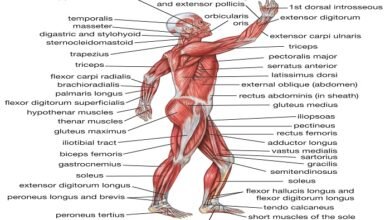Understanding Wry Neck: Causes, Symptoms, and Treatment Options

Introduction:
Wry neck, also known as torticollis, is a condition characterized by an abnormal positioning of the head and neck. It often causes the head to tilt to one side while the chin points to the opposite direction. This condition can be distressing and uncomfortable, affecting individuals of all ages. In this article, we will delve into the causes, symptoms, and treatment options for wry neck.
What is Wry Neck?
Wry neck is a condition that results in the involuntary contraction or spasm of the neck muscles, leading to a twisted or tilted neck position. The term “wry” refers to the twisted appearance, while “neck” denotes the affected area of the body. It can occur suddenly or develop gradually over time.
Causes of Wry Neck:
Muscular Causes:
Muscular causes are the most common culprits behind wry neck. These may include muscle strain or sprain, muscular spasm, or muscle tightness. Poor posture, sleeping in an awkward position, or sudden jerking movements can trigger these muscular issues, leading to the development of wry neck.
Congenital Causes:
Some individuals are born with a predisposition to wry neck due to congenital abnormalities. Congenital torticollis occurs when the muscles in the neck are shortened or damaged during birth. This condition requires early diagnosis and intervention to prevent long-term complications.
Neurological Causes:
In rare cases, wry neck can be attributed to underlying neurological conditions such as cervical dystonia or spasmodic torticollis. These conditions involve abnormal nerve signals that cause involuntary muscle contractions in the neck.
Symptoms of Wry Neck:
Wry neck manifests through several distinctive symptoms, including:
Head and Neck Positioning:
The most apparent symptom of wry neck is the abnormal positioning of the head and neck. The head may tilt to one side, either towards the shoulder or away from it. Meanwhile, the chin typically points in the opposite direction.
Limited Range of Motion:
Individuals with wry neck often experience a restricted range of motion in their neck. Turning the head or looking upwards and downwards may be difficult or painful.
Muscle Stiffness and Tenderness:
The affected neck muscles may feel stiff, tense, or tender to the touch. This can cause discomfort and pain, especially when trying to move the neck.
Headaches:
Wry neck can trigger tension headaches due to the strained and tense muscles in the neck. These headaches are often localized to the back of the head or the temples.
Treatment Options for Wry Neck:
Physiotherapy:
Physiotherapy plays a crucial role in the management of wry neck. A physiotherapist can provide exercises and stretches to improve neck mobility, strengthen the neck muscles, and alleviate pain. They may also employ techniques like heat or cold therapy, massage, and ultrasound to aid in recovery.
Medications:
In some cases, nonsteroidal anti-inflammatory drugs (NSAIDs) or muscle relaxants may be prescribed to reduce pain and inflammation associated with wry neck. These medications can help improve comfort levels during the recovery process.
Neck Collars and Supports:
Wearing a neck collar or brace can provide stability and support to the neck, allowing the muscles to relax and heal. However, prolonged use of these supports should be avoided, as it can lead to muscle atrophy and dependency.
Botox Injections:
For individuals with severe and persistent wry neck caused by cervical dystonia, Botox injections may be recommended. These injections can help relax the affected muscles and reduce spasms.
Preventive Measures and Self-Care:
To prevent wry neck or minimize its recurrence, the following measures can be helpful:
Maintain Good Posture:
Practicing good posture while sitting, standing, and sleeping can reduce strain on the neck muscles and decrease the risk of developing wry neck.
Regular Stretching and Strengthening Exercises:
Engaging in regular neck stretching and strengthening exercises can improve flexibility, enhance muscle strength, and reduce the likelihood of wry neck episodes.
Take Breaks from Prolonged Activities:
If you engage in activities that require prolonged neck positioning (such as computer work or driving), take frequent breaks to rest and stretch your neck muscles.
Conclusion:
Wry neck is a condition characterized by the abnormal positioning of the head and neck, often causing discomfort and limited range of motion. Understanding the causes, symptoms, and treatment options for wry neck is crucial for effective management and prevention. By seeking appropriate medical attention, undergoing physiotherapy, and adopting preventive measures, individuals with wry neck can find relief and improve their quality of life. Remember, if you suspect wry neck or experience persistent symptoms, it is always advisable to consult a healthcare professional for accurate diagnosis and personalized treatment.




